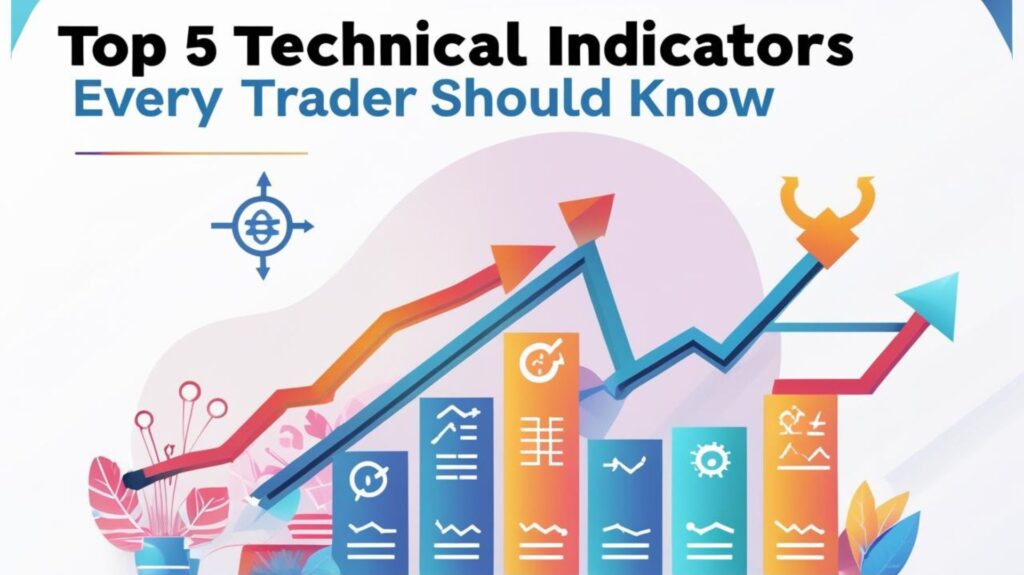
If you’re serious about trading, relying only on instincts or news isn’t enough. Successful traders combine strategy with tools that help them analyze the market. These tools are called technical indicators — and they are essential for making smart, data-backed decisions.
In this blog, we’ll explore the top 5 technical indicators that every trader — especially beginners — should understand and use.
Best For: Identifying trends
A moving average smooths out price data to identify the direction of a trend over time. It’s a simple line, but very powerful when used right.
Types:
SMA (Simple Moving Average): Average price over a specific time.
EMA (Exponential Moving Average): Gives more weight to recent prices.
Use Case:
If the price is above the MA line, it’s considered an uptrend.
If below, it’s a downtrend.
✅ Pro Tip: Use the 50-day and 200-day EMAs for long-term trading and crossovers.
Best For: Spotting overbought or oversold conditions
The RSI is a momentum indicator that tells you whether a stock is being overbought or oversold.
Scale: 0–100
Above 70: Overbought (possible sell signal)
Below 30: Oversold (possible buy signal)
Use Case:
If RSI is near 30 and the stock is near support, it could be a buying opportunity.
✅ Pro Tip: Combine RSI with support/resistance levels for stronger signals.
Best For: Spotting trend reversals
MACD is a trend-following momentum indicator that shows the relationship between two EMAs.
Includes the MACD line, Signal line, and a Histogram
Use Case:
When the MACD line crosses above the signal line — it’s a bullish signal
When it crosses below — it’s a bearish signal
✅ Pro Tip: Use MACD with volume analysis for confirmation.
Best For: Volatility and breakout trading
Bollinger Bands consist of three lines:
A middle SMA
An upper band
A lower band
The bands expand and contract with market volatility.
Use Case:
Price touching the upper band = Overbought
Price touching the lower band = Oversold
✅ Pro Tip: Look for a “squeeze” (bands narrowing), which often signals a big move is coming.
Best For: Validating trends and breakouts
Volume is often overlooked, but it’s extremely important. It shows how many shares/contracts were traded in a given time.
Use Case:
A breakout with high volume = Stronger and reliable
A breakout with low volume = Possibly fake or weak
✅ Pro Tip: Combine volume with candlestick patterns to confirm reversals or continuation.
Welcome to Trade4u, the official learning platform of Trade with Bhagyashri – where your trading journey begins with knowledge, confidence, and real market wisdom.